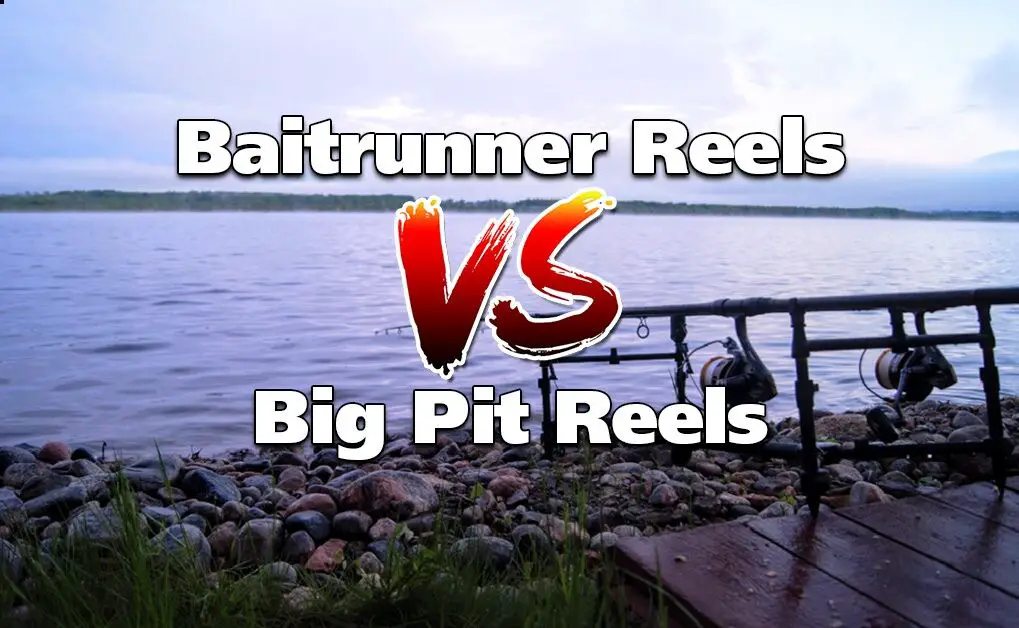INTRODUCTION
Having the proper tackle when you are pursuing a specific species is a huge determinant of one’s success. This means that having a suitable rod, reel, line weight, and terminal tackle for the fish you are pursuing makes for a more successful and enjoyable angling experience. Let’s focus on a REEL key component that has many entry-level carp anglers scratching their heads: choosing the right reel for their style of fishing. There are so many options out there—and that’s before you consider the number of centrepin and fly reels that are suitable for carp fishing. Rather, let’s take a look at two styles of reels marketed to carp anglers all over the world: the baitrunner/free spool and big pit style reels.
I personally own quite a collection of reels specifically for carp and have examples of both styles, although I do have a clear bias, which I will elaborate on later. For now, let’s get down to business.
BAITRUNNER / FREE SPOOL STYLE REELS
Baitrunner is actually the patented name of a mechanism that’s design is owned by Shimano, who first began building this mechanism into their Triton Sea Spin reels in the mid- to late-1980s. After it was discovered by carp anglers in the U.K., Shimano introduced the first Baitrunner Reel in 1987, which was marketed to freshwater anglers. (I’m proud to say I own one of these reels!)
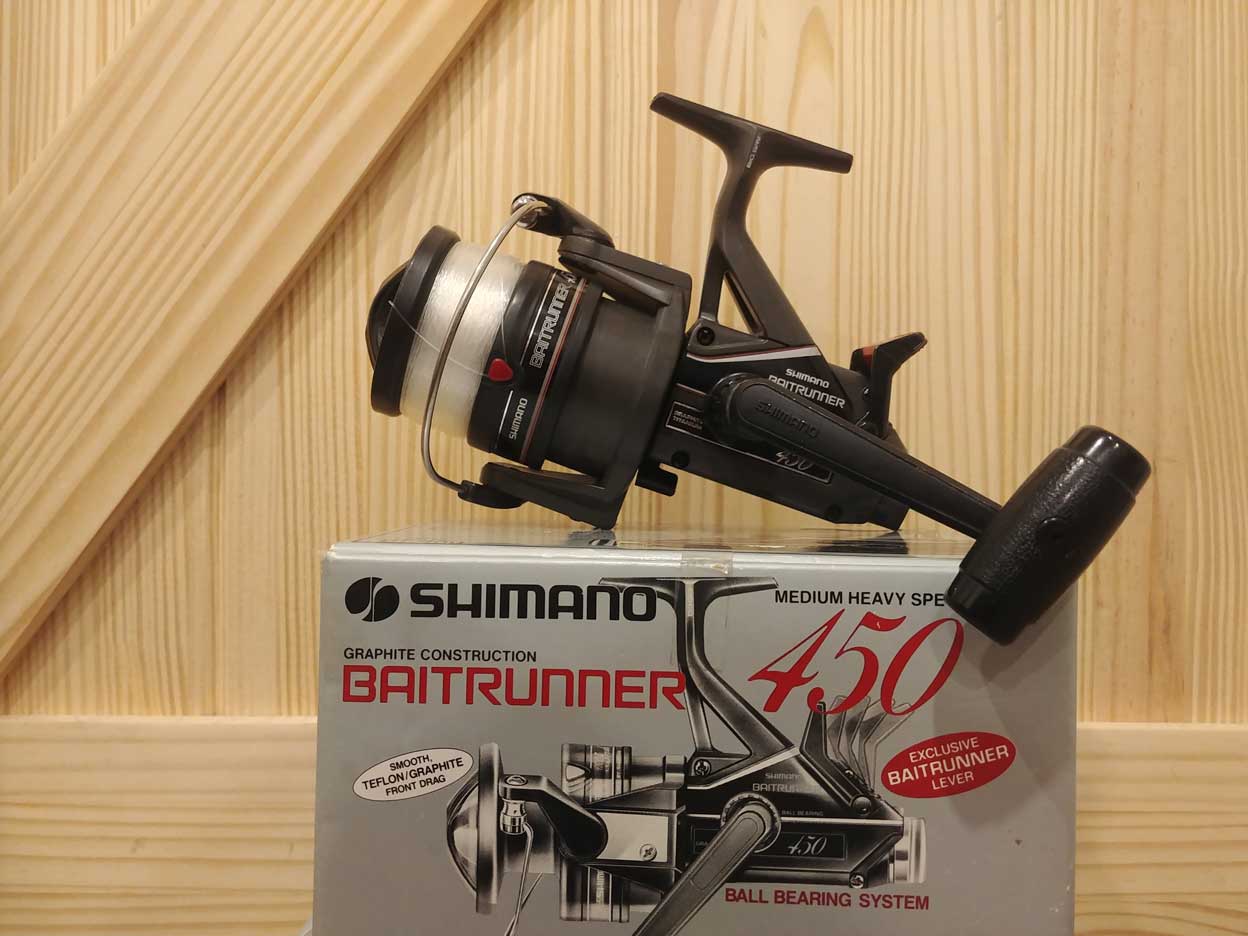
The reel essentially changed the carp game overnight, as angler’s went from having to fumble with incredibly finicky drag systems or back-winding to having a preset drag system that disengaged at the turn of the handle, allowing you to apply drag to a running fish immediately. The entire process was made possible by a lever located at the back of the reel, which would allow you to engage the “baitrunner” mode. Once the switch was engaged, the spool would spin freely. How freely would be determined by the angler via a secondary drag located at the rear of the reel.
Over time, Shimano has made this reel more advanced and user friendly with more response drag systems, more respectable line lay, etc. The internal mechanism, however, remains much the same as per patent. Many other companies such as Daiwa and Okuma have their own version of a “baitrunner” style reel: Daiwa with their “Bite n’ Run” technology; Okuma with their “Baitfeeder”; and the list goes on. Regardless of which brand you end up with, all of these “free spool” style reels aim to accomplish the same thing.
Check out Ang and Pete using baitrunners from a boat here.
Good Idea / Bad Idea
My first carp reel was a “free spool” style reel, and it suited my fishing perfectly when I was first starting out. This was mainly because I was fishing relatively close in—anywhere between just under my rod tip and maybe thirty yards out. The baitrunner lever was great for helping me to quickly set the hook on a running fish rather than fumbling with a standard spinning reel drag system. I exclusively fished with “free spool” style reels for the first year and a half, and landed a ton of fish. Personally, I feel that if you intend only to fish smaller waters such as ponds, creeks or the margins on any system, then a “free spool” style reel is a perfect option for you.
So when and why did things change? Well, that was when I had a catastrophic failure of the “free spool” system in one of my reels, and it was 100% my fault for putting it into a scenario that I now know was doomed for failure.
So where and when is a baitrunner not a good idea? Well, simply put, the kind of conditions I put my one reel under! You see, most baitrunners are smaller reels and not exactly ideal for distance casting. Therefore, one should also infer that they aren’t ideal for fighting fish at a great distance.
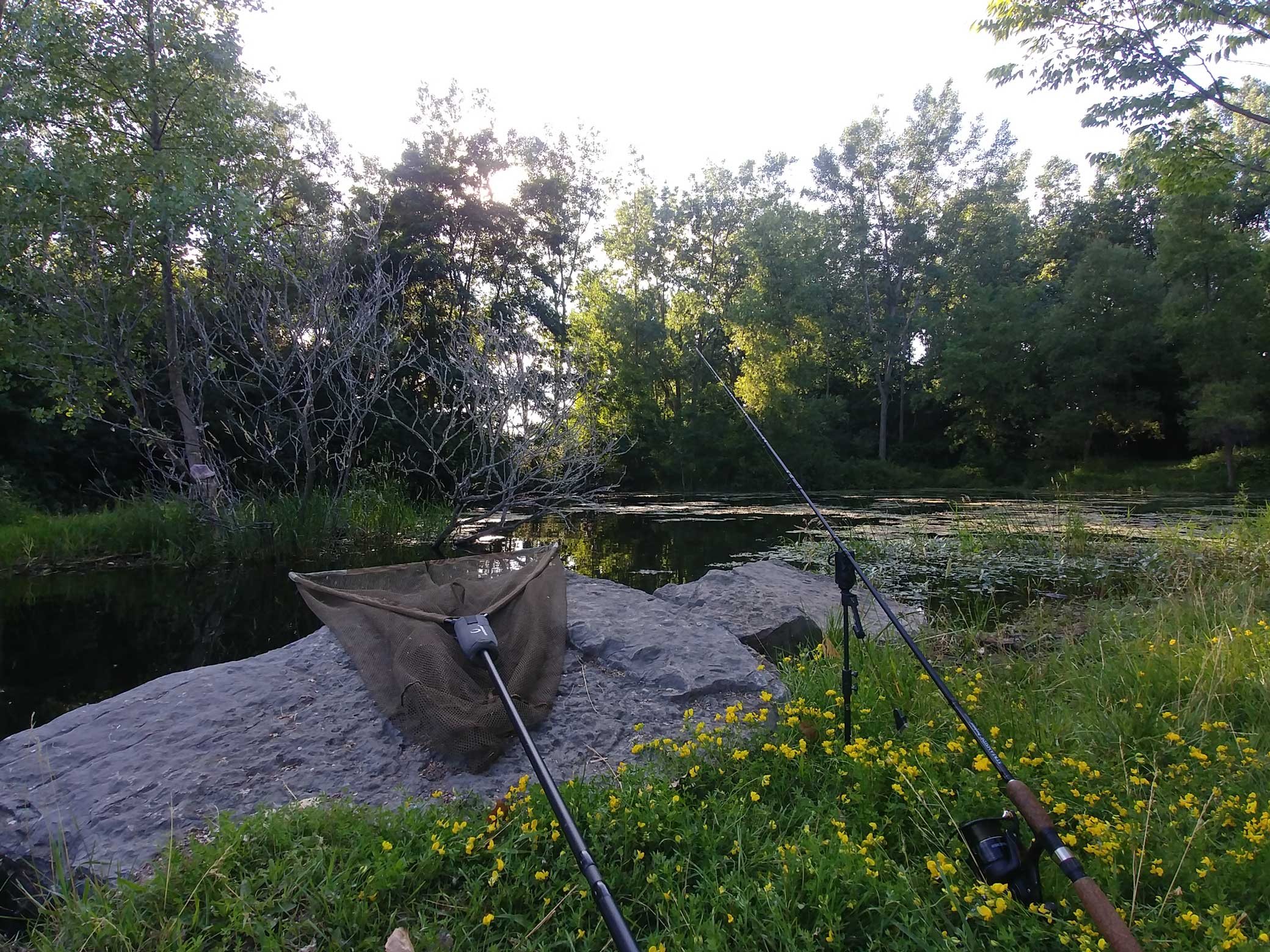
The reason we can infer this is based on the simple principle that as you work your way through your spool’s line capacity, drag becomes tighter, whether you like it or not, and that is simple physics. It’s much like trying to turn the wheel of a car from the centre rather than its circumference.
You must also remember not only to set your baitrunner each time you cast out, but also to reset your primary drag after each fish before recasting. (Trust me, you might think that’s common sense, but this has presented a problem to a great many of us!)
A Free-Spooling Tragedy
Now for a tragic story: I was fishing on a river swim with a couple of friends, and we began seeing signs of fish (namely breaching) out at around 100 yards. Without a second thought, we all relocated our rigs out to that particular line. I suppose you can say that, in the fine words of Dr. Ian Malcom in Jurassic Park, I was “so preoccupied with whether or not [I] could, [I] didn’t stop to think if [I] should.” I should have been cognisant that:
- My spool wasn’t fully loaded prior to the session;
- I was running braid (meaning no forgiveness);
- There was current involved in the equation;
- I hadn’t reset the primary drag loose enough given the previous three variables.
The result was heartbreaking. I heard a horrible grinding noise as the baitrunner system disengaged, and I realized that I had completely pooched a once-beloved reel. So learn from my mistake; although these smaller-bodied “free spool” reels do indeed boast a rather large line capacity, they aren’t designed for long-distance fishing. Instead, enjoy using “free spool” reels on smaller intimate waters such as a pond, creek, canal, or—if you are fishing the margins (close to shore) or within, say, that first fifty yards—on still water.
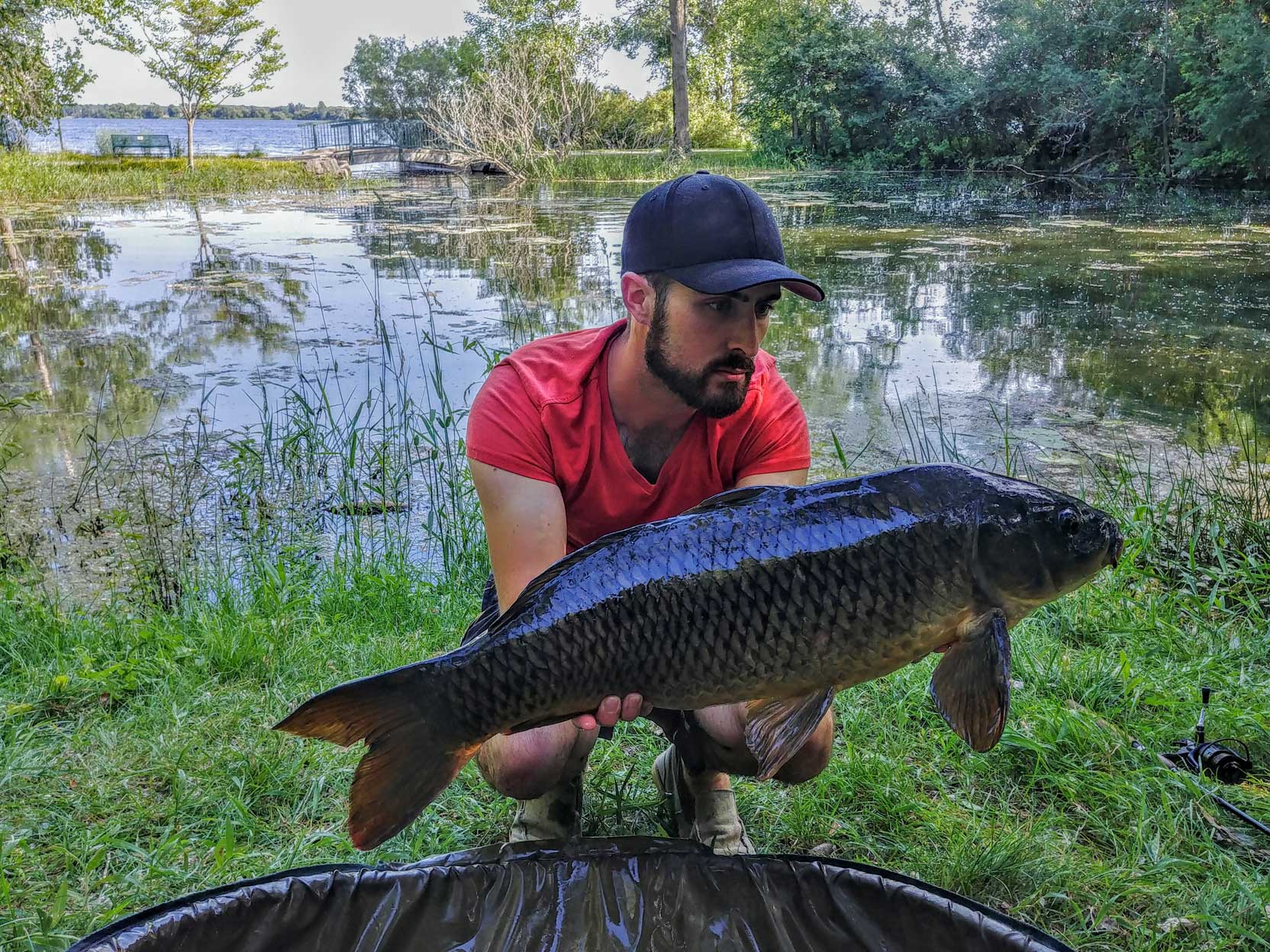
BIG PIT REELS
Big pit reels are truthfully just very big spinning reels with often one notable feature being a very “quick” drag. This offers the angler the ability to go from a very loose drag to a fighting drag within a single rotation (or less) of the drag knob. Big pit reels are also built like tanks and, proportionate to their dimensions, have beefed up internal gearing. These larger reels are designed for two things: casting a country mile and still having enough line to fight a fish, and holding their own against massive fish.
Big pits first emerged on the scene as a beach/surf fishing reel. They were later adopted by the carp scene for their uncanny ability to cast obscene distances and retrieve line at a much faster rate than the smaller baitrunners and spinning reels being used prior.
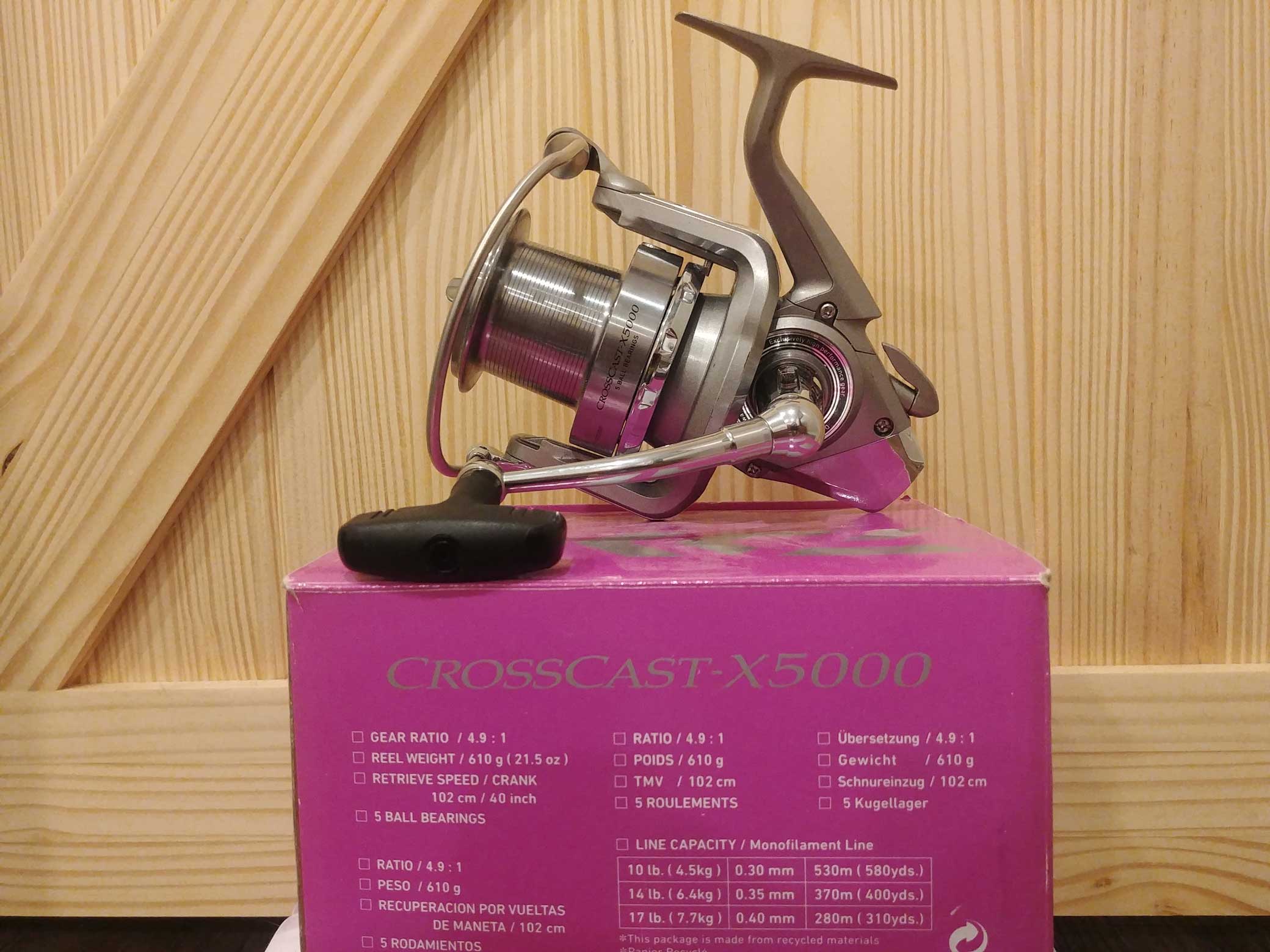
Big pits became a popular item for fishing larger waters where longer casts were needed to cover a greater expanse of water. To this day, that is the one benefit of fishing with big pits over baitrunners. Distance casting competitions held around the world rarely involve ultralight tackle, but rather involve large spinning and casting reels and, more often than not, carp and beach/surf fishing tackle.
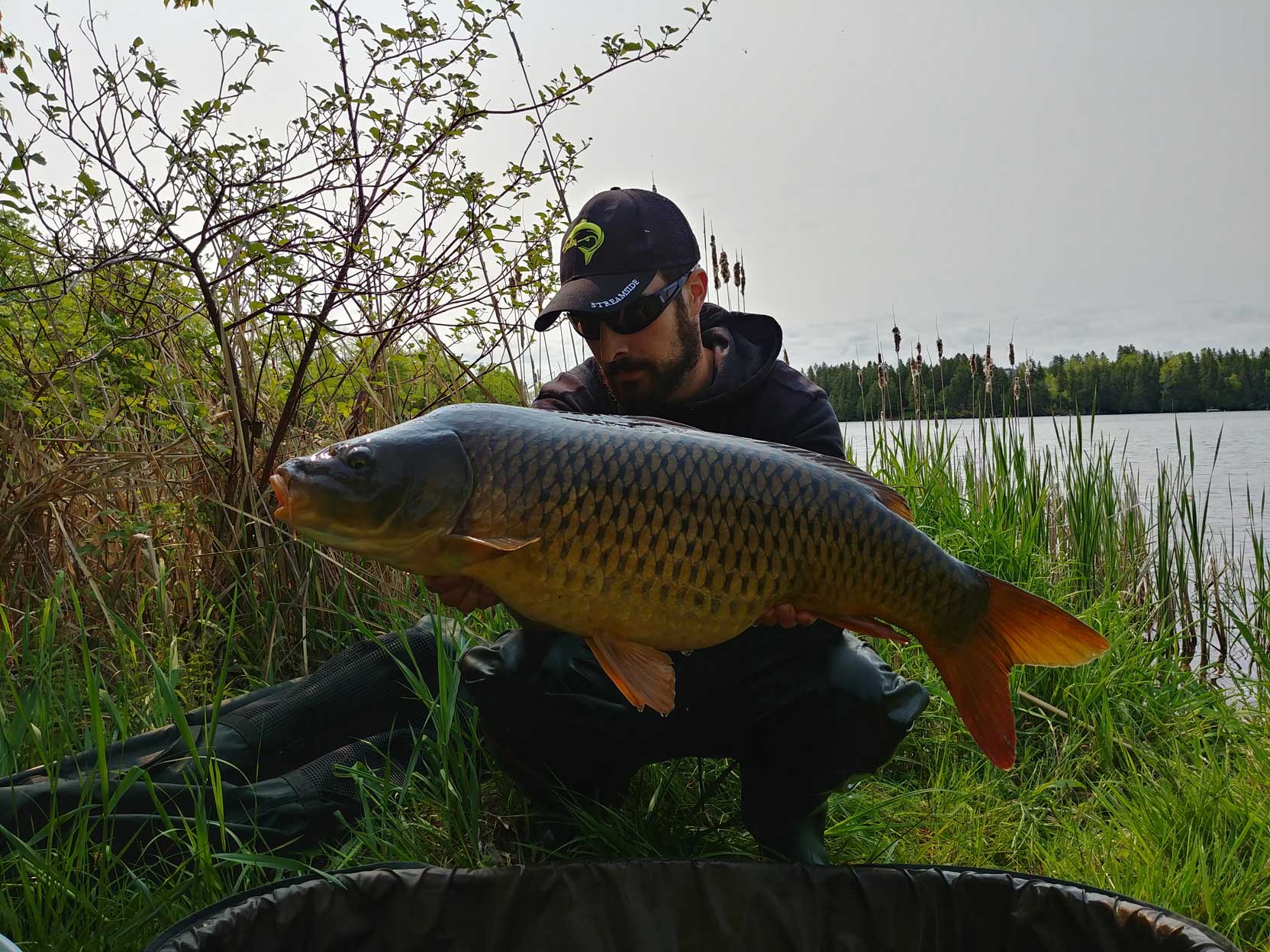
The physics behind how a larger reel allows for longer distance casts is all in the spool diameter. When a cast is made on a spinning reel and viewed in slow motion, one will observe that the line comes off in a series of spirals. As the line exits the spool, the diameter of the remaining line on the spool becomes smaller and therefore, as it passes the lip of the reel, it begins to experience more friction. This means that the line is travelling fastest at the moment your finger releases the line, the cast is initiated, and then decelerates at a rate according to the diameter of the spool. The wider the spool diameter, the slower the deceleration process, as the remaining line diameter decreases at a slower rate, thus less friction at the spool lip. What this means is that it takes more effort (teetering on impossible) to achieve the same distance with a big pit as one could accomplish with a baitrunner/smaller spinning reel.
When Not to Use Big Pits
I tend to use Big Pits whenever I am fishing larger venues where I need to have the ability to hit distances unattainable with a smaller diameter reel. Having the ability to cover the greatest amount of water possible is ultimately the best option. That being said, there are three scenarios where a Big Pit would prove to be a big pain in the ass:
- When fishing for carp using a float. Big pit reels come into their own when casting heavier weights and, although capable of casting a float set up, would be uncomfortable to hold while working a float, as they weigh in excess of a pound.
- If attempting to take a carp off the surface—much for the same reasons as float fishing for carp—you would find casting would be more difficult and holding that weighty reel would be taxing.
- The final scenario would be stalking for carp as this approach tends to rely on stealth and scaled-down tackle (rods as small as six feet long!). Therefore, in terms of balance and comfort, a big pit reel would be less than ideal.
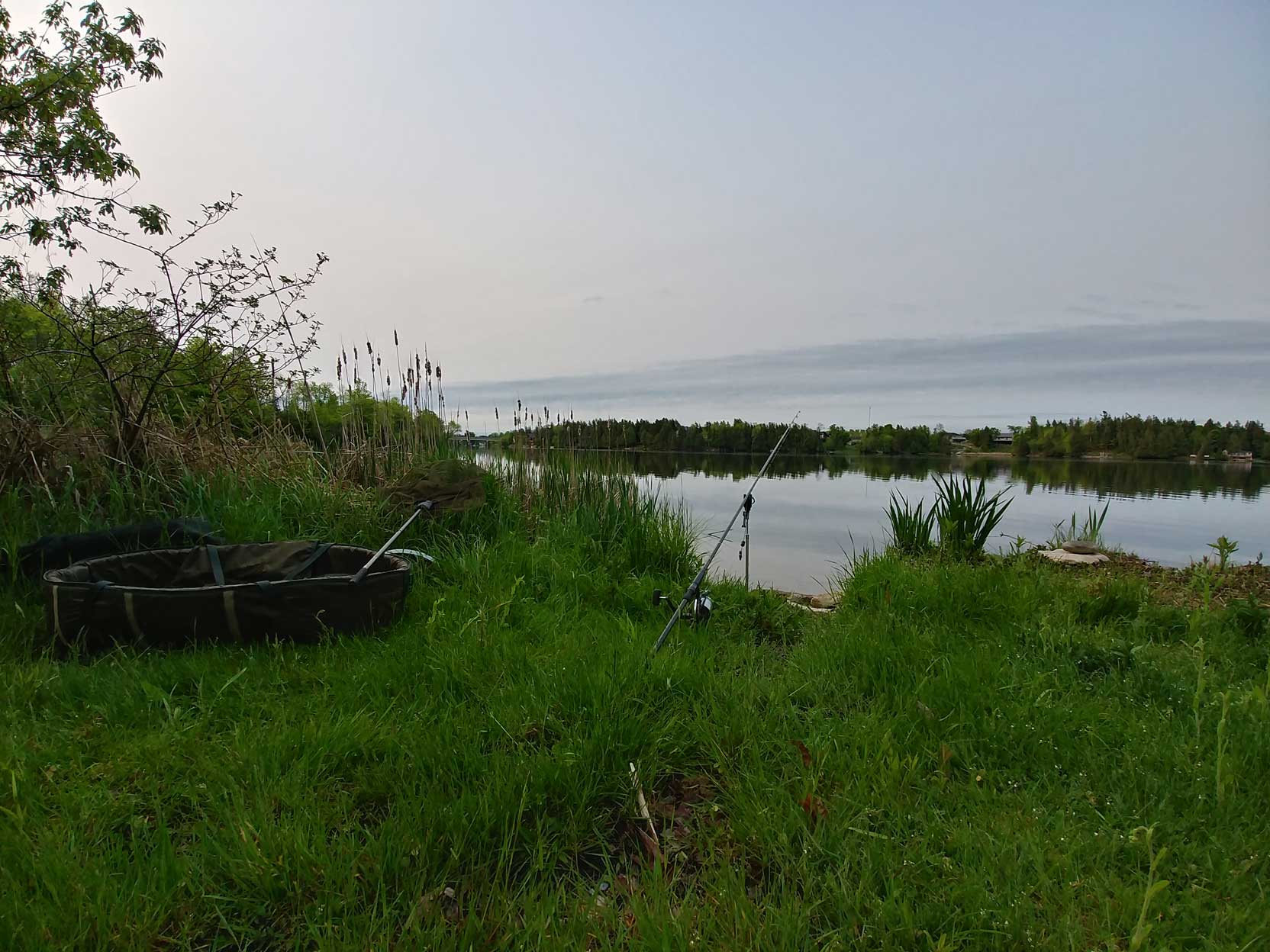
THE BEST OF BOTH WORLDS
So what if you like the idea of the baitrunner, but want to cast a country mile? Well, good news! These products also exist and offer anglers the best of both worlds. Almost every company that designs a big pit and a baitrunner reel has combined the two technologies to create a reel that utilizes the mechanics of the baitrunner/free-spool mechanism and the size, line capacity, and distance casting properties of the big pit.
CLOSING
As with any species that we anglers pursue, I feel that having options is key to success. As stated in my previous articles, having flexibility and more tools at your disposal will better your chances of success. My collection is both eccentric and extensive. Each reel and rod has its own applications, which I feel give me the necessary tools for targeting this incredible species wherever they roam.





